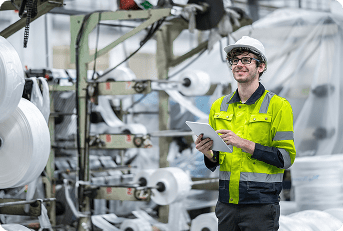Since the Uyghur Forced Labor Prevention Act (UFLPA) came into force in June 2022, its areas of focus have expanded multiple times. At first, the solar panel industry was hard hit, with major delays in getting materials. Soon after, the U.S. Department of Homeland Security (DHS) updated the UFLPA Entity List to include cotton, apparel, electronic goods, and critical minerals. There’s been a clear pattern of congressional pressure leading to UFLPA expansion, and the latest signs indicate that automotive parts are next. This means automotive manufacturers and their suppliers need to be planning ahead.
Congress is Clamoring For “Supercharged” Enforcement
A 2024 report from the U.S. Senate Committee on Finance found that several well-known automotive manufacturers were impacted by forced labor risks, leading to calls for stricter enforcement in the industry. Senate Finance Committee Chair Ron Wyden commented: “Automakers’ self-policing is clearly not doing the job. I’m calling on Customs and Border Protection (CBP) to take a number of specific steps to supercharge enforcement and crack down on companies that fuel the shameful use of forced labor in China.”
The committee specifically recommended that the DHS:
- Speed up work to identify facilities in the Xinjiang Uyghur Autonomous Region (XUAR) and add them to the UFLPA Entity List
- Update the list of high-priority sectors for UFLPA enforcement
- Improve information sharing regarding enforcement
- Provide clearer direction about how to detect forced labor in supply chains
This last bullet speaks to why forced labor due diligence is so complicated. Forced labor and human rights issues are often buried deep in the supply chain, so simply asking suppliers to adhere to a code of conduct is not enough to protect against non-compliance. For manufacturers with complex global supply chains, expert support and guidance is often needed.
All this congressional scrutiny is backed up by clear data from a 2022 independent investigative report that found ties to Uyghur forced labor in the electronics and critical minerals used in automotive manufacturing. Automotive manufacturers need a comprehensive solution to get visibility into their supply chain risks to avoid the major disruptions other industries have already faced under UFLPA.
It’s a pattern we’ve seen before. The latest round of congressional scrutiny and independent research into forced labor risks making the news lately about automotive components is following the same path as cotton supply chains. Let’s take a look at the recent UFLPA expansion to see what automotive manufacturers can learn.
Cotton Supply Chains: How Congressional Scrutiny Triggered Increased Enforcement
In May 2024, the U.S. DHS added 26 new entities to the UFLPA Entity List, which names entities that mine, produce, or manufacture goods and articles using forced labor. The recent major expansion to the Entity List was in response to previous congressional pressure demanding more enforcement on cotton from the region and an increase in the number of companies on the Entity List.
What’s notable about the most recent update is that the majority of companies on the list are outside XUAR, highlighting the need for companies to ensure their due diligence is not focused only on XUAR, but on other parts of China as well. This is most likely in response to allegations that Uyghur forced laborers in the Xinjiang region were moved to other regions in China not currently covered by the act. In addition, research showed that certain importers have begun to ship goods made with forced labor through third-party countries in an attempt to slip past U.S. CBP.
Also notable is the number of entities added: Until now, additions to the UFLPA Entity list have largely been in the single digits. This addition shows that the Forced Labor Enforcement Task Force has kept its promise to exponentially increase the number of entities to be added to the list.
As the Entity List grows, manufacturers from different industries need to pay attention to how it affects their supply chain risks. This update does more than signal that the DHS is aggressively eliminating forced labor in the U.S. market — it also points to future changes that push the limits of UFLPA’s original scope.
Manufacturers Cannot Afford to Be Complacent
Automotive companies without a supply chain sustainability and forced labor program will be the most vulnerable to future UFLPA updates. But manufacturers with programs that haven’t been reviewed since UFLPA came first into force are also at high risk, given the continuous prioritization of new goods and materials for enforcement, as well as the scrutiny on third countries to prevent circumvention of UFLPA. To stay compliant and protect against forced labor hidden in parts or imports, companies need to continuously update their programs, review regulatory changes, and go beyond bare-minimum due diligence.
Assent’s supply chain sustainability management solution helps manufacturers with complex global supply chains stay ahead of UFLPA changes so they can operate responsibly and without disruption. Our team of human rights experts keeps organizations informed and proactive about the regulatory landscape, taking the headache out identifying hidden forced labor risks.














